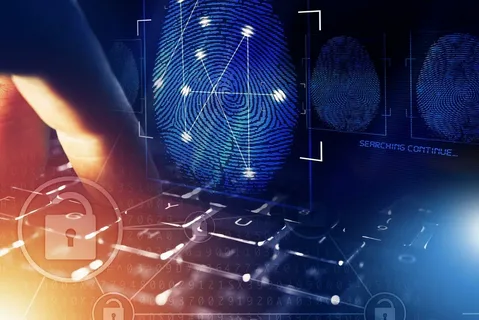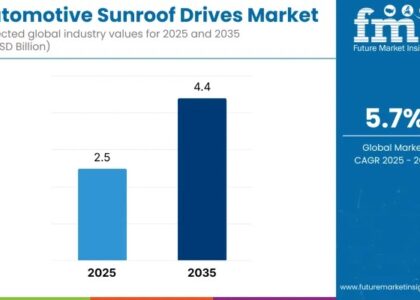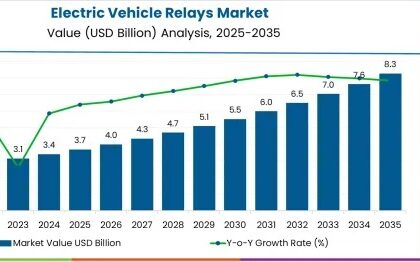The global digital forensics market is projected to rise from USD 15.67 billion in 2025 to approximately USD 46.14 billion by 2035, registering a CAGR of 11.4% over the forecast period. In 2024, cybersecurity breaches, insider threats, and increasing data privacy concerns prompted greater investment in digital evidence acquisition and analysis. By 2025, the demand for advanced digital forensics tools has expanded significantly, especially within regulated industries and public security organizations.
In an era defined by data breaches, cybercrime, and digital transformation, digital forensics has become a critical line of defense in the fight for cybersecurity and information integrity. Once limited to criminal investigations, the digital forensics market has rapidly evolved into a multifaceted discipline essential for enterprises, governments, law enforcement agencies, and legal systems worldwide.
Today, digital forensics plays a pivotal role in identifying, preserving, analyzing, and presenting electronic evidence—turning complex data trails into actionable insights and legally admissible proof.
Get Ahead with Our Report: Request Your Sample Now!
https://www.futuremarketinsights.com/reports/sample/rep-gb-3350
From Evidence Recovery to Incident Response
Digital forensics has grown far beyond recovering deleted files or examining hard drives. It now encompasses a broad range of domains including:
-
Computer Forensics: Investigating desktop and laptop systems for user activity, malicious software, and unauthorized access.
-
Mobile Device Forensics: Extracting and analyzing data from smartphones, tablets, and wearable devices.
-
Network Forensics: Monitoring and reconstructing network traffic to trace intrusions, data exfiltration, and distributed denial-of-service (DDoS) attacks.
-
Cloud and Virtual Forensics: Uncovering evidence in decentralized and dynamically provisioned environments.
-
IoT Forensics: Examining data from connected devices and sensors that are increasingly part of cybercrime investigations.
This wide scope enables digital forensics professionals to support both post-incident investigations and proactive threat detection, bridging the gap between cybersecurity and legal accountability.
Technology-Driven Investigations
Modern digital forensics relies on advanced tools and technologies that automate evidence collection, enhance data recovery, and speed up analysis. These include:
-
Artificial Intelligence (AI) and Machine Learning (ML): For identifying patterns, sorting through vast datasets, and flagging anomalies.
-
Big Data Analytics: To analyze massive logs and metadata from corporate environments, communication channels, and digital devices.
-
Blockchain Forensics: For tracking cryptocurrency transactions and decoding illicit financial activities.
-
Remote Forensics Platforms: Enabling investigators to collect evidence without physically accessing the device or location.
These technologies not only accelerate investigations but also help maintain chain of custody, ensuring the credibility and integrity of the evidence in legal proceedings.
Applications Across Industries and Agencies
While law enforcement remains a key user of digital forensics, its applications now span multiple industries. Financial institutions use forensics to investigate fraud and insider threats. Healthcare organizations rely on it to secure patient data and comply with data privacy regulations. Corporations use forensic tools during internal audits, IP theft cases, and compliance checks.
In the public sector, digital forensics supports national security agencies in combatting cyberterrorism, espionage, and disinformation campaigns. It is also vital in electoral security, critical infrastructure protection, and the monitoring of cyber warfare activities.
Cloud, Mobility, and the Growing Complexity of Evidence
The shift to cloud computing, bring-your-own-device (BYOD) policies, and remote work environments has introduced new layers of complexity. Investigators now face challenges such as data fragmentation across multiple platforms, cross-jurisdictional issues, and ephemeral evidence that can be deleted or modified remotely.
To adapt, digital forensics professionals are adopting cloud-native investigation tools, forensic readiness strategies, and cross-border cooperation protocols that align with global data protection laws and chain-of-evidence requirements.
Challenges in Encryption, Privacy, and Legal Frameworks
While technology empowers digital forensics, it also presents hurdles. End-to-end encryption, anonymization tools, and secure messaging apps can obscure key evidence. Investigators must balance the need for access with privacy rights and legal boundaries.
In addition, varying legal standards across jurisdictions make it difficult to execute international investigations or use evidence gathered in one country in another. These legal complexities necessitate continuous collaboration between forensic experts, legal teams, policymakers, and cybersecurity professionals.
Exhaustive Market Report: A Complete Study
https://www.futuremarketinsights.com/reports/digital-forensics-market
Training, Certification, and Skills Demand
As the demand for digital forensic expertise rises, so too does the need for skilled professionals. Investigators must have a deep understanding of operating systems, file structures, malware behavior, and network protocols, as well as legal and ethical practices.
Global certification programs, such as Certified Computer Examiner (CCE) and GIAC Certified Forensic Analyst (GCFA), are helping standardize knowledge and credibility. Meanwhile, continuous training is critical to keep up with rapidly evolving technologies and threat landscapes.
The Role of AI in the Future of Digital Forensics
Looking ahead, AI-driven forensics will play a central role in transforming investigations. Future tools will be capable of:
-
Automatically reconstructing cybercrime timelines.
-
Detecting deepfakes and synthetic media.
-
Interpreting natural language communications and code obfuscation.
-
Predicting attack vectors based on behavioral data.
These advancements will enable faster, more accurate, and more scalable investigations, helping organizations stay ahead of increasingly sophisticated cyber threats.
Building a Digital Justice System
As digital evidence becomes central to criminal cases, corporate disputes, and civil litigation, digital forensics is not just a technical function—it is becoming a pillar of modern justice and governance. Ensuring the authenticity, admissibility, and transparency of digital evidence is vital for fair trials, corporate accountability, and national security.
In a world where truth can be buried in terabytes of data, digital forensics serves as the compass—guiding investigators, institutions, and courts toward the facts with precision, integrity, and speed.
Whether combating cybercrime, securing data, or preserving trust, the digital forensics market stands at the forefront of a digital future—where every byte matters and every trace tells a story.





